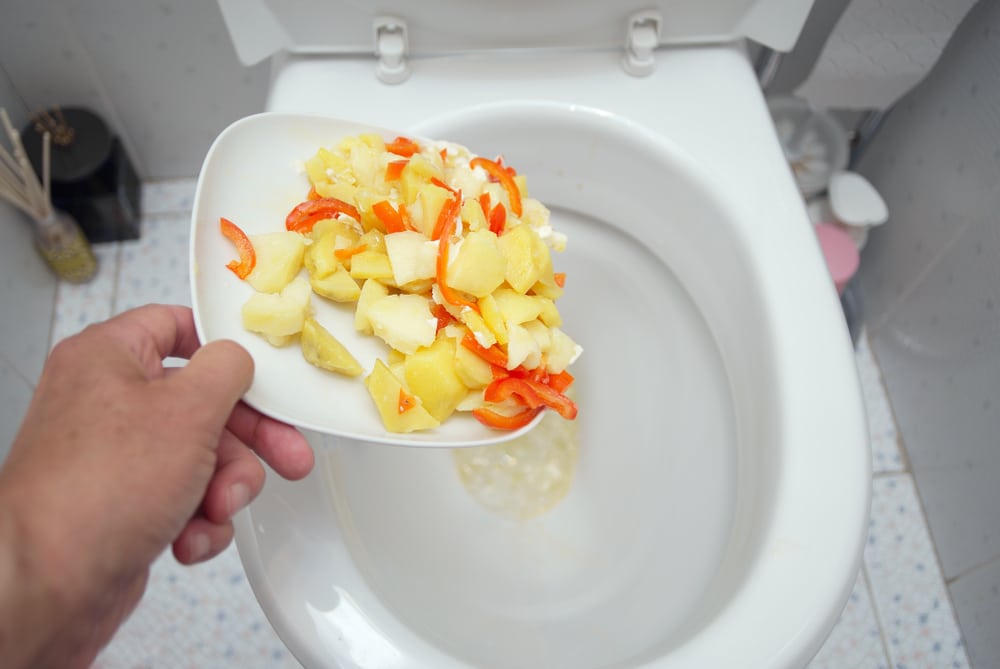Is it Allowed to Flush Food in the Toilet?
Is it Allowed to Flush Food in the Toilet?
Blog Article
What are your insights and beliefs about Think Twice Before Flushing Food Down Your Toilet?

Introduction
Many individuals are commonly confronted with the dilemma of what to do with food waste, especially when it concerns leftovers or scraps. One common concern that occurs is whether it's alright to purge food down the toilet. In this write-up, we'll explore the reasons why individuals might consider purging food, the effects of doing so, and different techniques for proper disposal.
Reasons individuals could take into consideration flushing food
Absence of awareness
Some individuals may not know the possible injury brought on by purging food down the bathroom. They might wrongly think that it's a safe practice.
Ease
Flushing food down the toilet may look like a quick and easy remedy to dealing with undesirable scraps, particularly when there's no close-by trash can offered.
Laziness
In some cases, people might merely select to flush food out of sheer negligence, without taking into consideration the repercussions of their actions.
Effects of flushing food down the bathroom
Ecological effect
Food waste that ends up in waterways can contribute to air pollution and damage aquatic communities. In addition, the water utilized to flush food can stress water sources.
Pipes issues
Purging food can lead to blocked pipelines and drains, causing pricey plumbing repair services and inconveniences.
Kinds of food that need to not be flushed
Coarse foods
Foods with fibrous structures such as celery or corn husks can get tangled in pipes and cause clogs.
Starchy foods
Starchy foods like pasta and rice can absorb water and swell, leading to obstructions in pipelines.
Oils and fats
Greasy foods like bacon or food preparation oils should never be purged down the bathroom as they can strengthen and cause clogs.
Appropriate disposal methods for food waste
Utilizing a garbage disposal
For homes geared up with waste disposal unit, food scraps can be ground up and flushed with the pipes system. However, not all foods appropriate for disposal in this manner.
Recycling
Particular food product packaging products can be recycled, minimizing waste and decreasing ecological effect.
Composting
Composting is an environment-friendly way to dispose of food waste. Organic products can be composted and utilized to enhance dirt for gardening.
The importance of correct waste administration
Decreasing environmental damage
Appropriate waste administration practices, such as composting and recycling, help minimize pollution and protect natural resources for future generations.
Protecting plumbing systems
By preventing the technique of flushing food down the commode, property owners can protect against expensive pipes fixings and preserve the stability of their plumbing systems.
Final thought
In conclusion, while it may be tempting to flush food down the toilet for convenience, it is essential to comprehend the potential effects of this action. By taking on appropriate waste management techniques and dealing with food waste properly, individuals can add to much healthier pipes systems and a cleaner environment for all.
FLUSH FOOD DOWN THE TOILET?
FLUSHING FOOD CAN CAUSE BLOCKED DRAINS IN YOUR HOME
All of the plumbing fixtures in your home are connected to the same sewer pipe outside of your home. This outdoor sewer pipe is responsible for transporting all the wastewater from your home to the Council sewer mains. Even small pieces of food that go down the kitchen sink can cause problems for your sewer. It should therefore be obvious that flushing larger bits of food, such as meat, risks a clog in either the toilet itself or the sewer pipes. Flushing greasy food is even more problematic because oil coagulates when it cools, coating the interior lining of your pipes.
THE TOILET IS NOT A BIN
Food isn’t the only thing that people shouldn’t be flushing down the toilet. People use the toilet to dispose of all kinds of things such as tampons, makeup wipes, dental floss, kitty litter and even underwear. Water goes to great lengths to educate residents about the high costs and stress placed on wastewater treatment systems simply from people flushing the wrong stuff down the toilet. It costs taxpayers millions of dollars each year, and homeowners thousands in blocked drain repairs.
FLUSHING FOOD IS A WASTE OF WATER
Flushing food is a waste of our most precious resource - water. In June this year Level 1 water restrictions were introduced to protect water supply from drought conditions. Much of New South Wales continues to be affected by prolonged drought with recent figures revealing up to 97 per cent of the state remains in drought. Depending on whether you have a single or dual flush toilet, every single flush uses between five and 11 litres of water. In the current climate this is a huge amount of water to be wasting on flushing food that should be placed in the bin (or better yet, the compost).
https://www.jabplumbingsolutions.com.au/blog/can-you-flush-food-down-the-toilet

As a fervent reader on Think Twice Before Flushing Food Down Your Toilet, I assumed sharing that piece of content was beneficial. Do you know about another individual who is very much interested in the topic? Take a moment to share it. We value reading our article about Is it safe to flush food (especially rice) down the toilet?.
Appointment Report this page